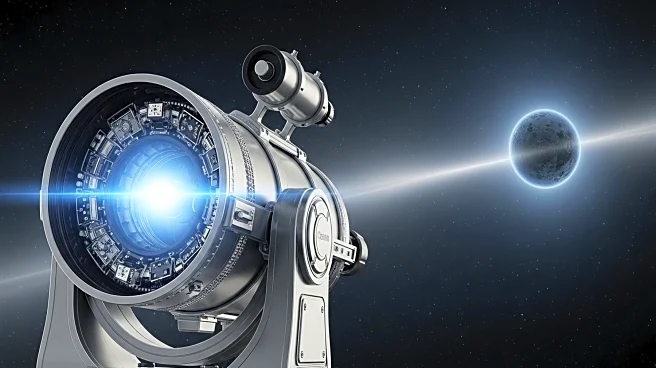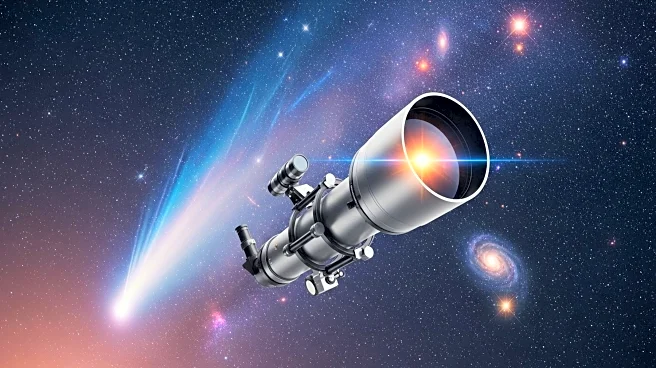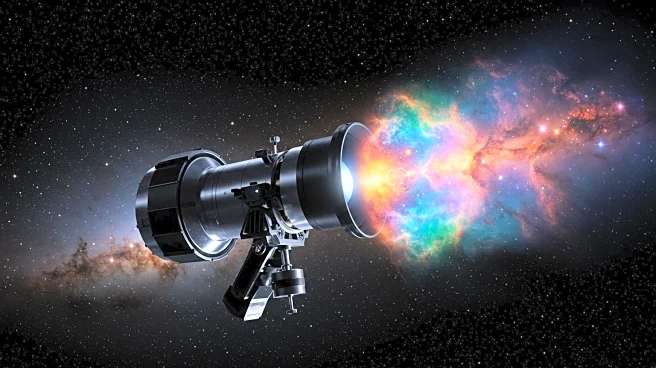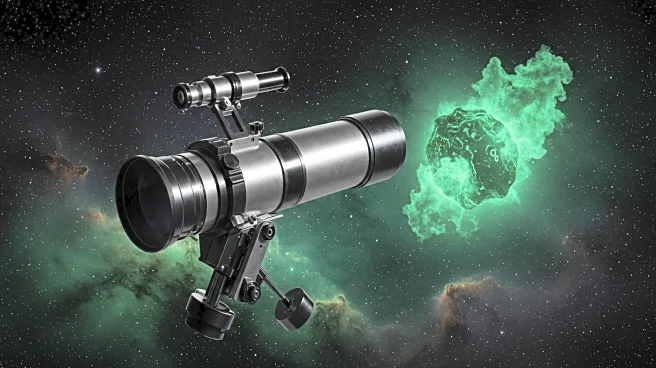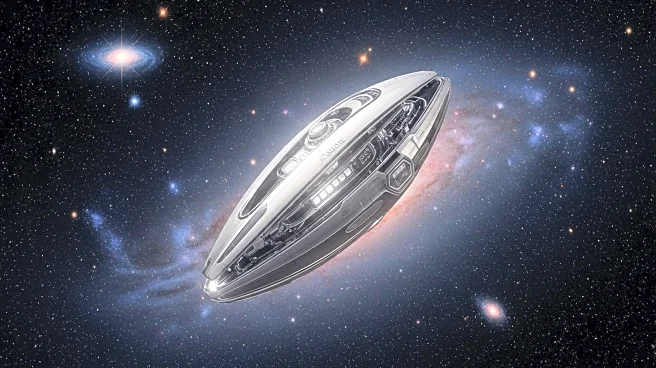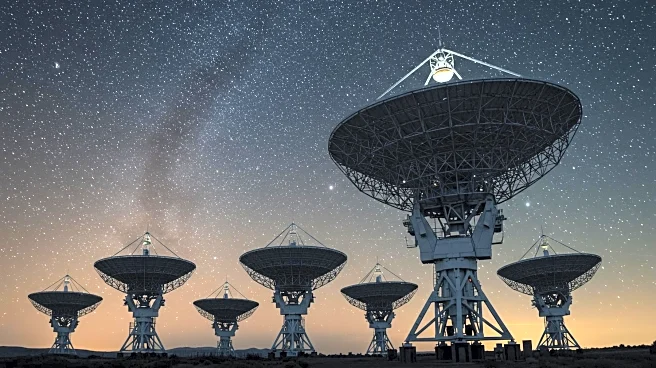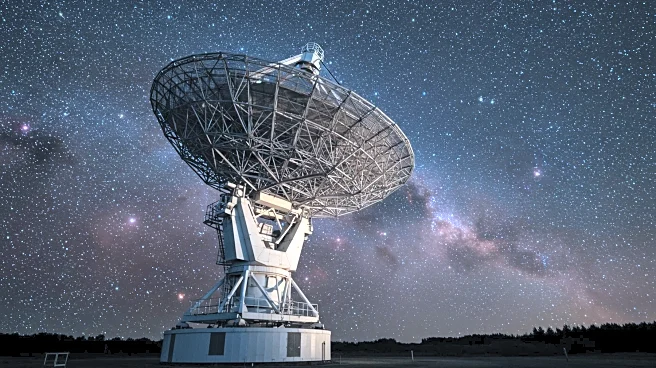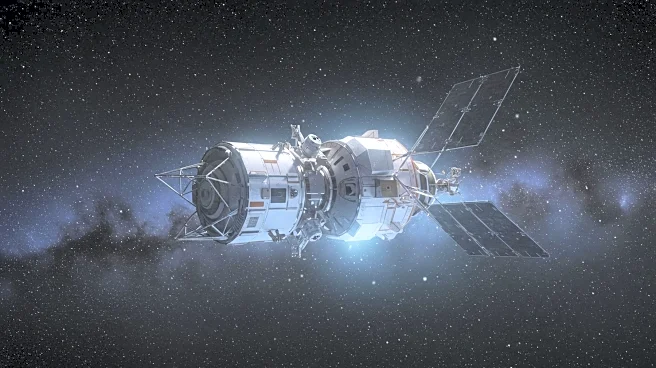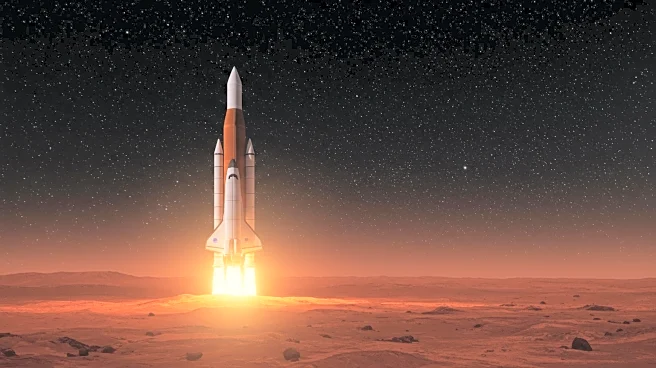What is the story about?
What's Happening?
The Webb Telescope has provided new observations of the interstellar object 3I/ATLAS, revealing a significant carbon dioxide (CO2) gas plume. The data, collected by the NIRSpec instrument, shows a prominent CO2-dominated coma with much less water vapor and carbon monoxide. This discovery aligns with earlier findings from the SPHEREx space observatory, which mapped the CO2 plume extending beyond 348,000 kilometers. The Webb data suggests that 3I/ATLAS does not have a typical cometary tail, indicating a unique composition and behavior. The object’s diameter is estimated to be up to 46 kilometers, based on its albedo. The observations raise questions about the object's origin and trajectory, suggesting it may not be a typical interstellar rock.
Why It's Important?
The findings from the Webb Telescope are significant for understanding interstellar objects and their compositions. The high CO2 to H2O ratio observed in 3I/ATLAS is unusual and challenges existing models of cometary behavior. This discovery could impact theories about the formation and evolution of interstellar objects, as well as their potential for hosting life. The data also suggests that 3I/ATLAS may have been deliberately targeted towards the inner Solar system, raising intriguing possibilities about its origin. These insights could influence future research and exploration strategies for interstellar objects.
What's Next?
Further analysis of the Webb Telescope data will continue to refine our understanding of 3I/ATLAS. Researchers may explore the possibility of technological signatures or artificial origins for the object, given its unusual trajectory and composition. The study of interstellar objects like 3I/ATLAS could lead to new discoveries about the materials and processes present in interstellar space. Continued observations and modeling will be crucial in determining the object's nature and potential implications for space exploration.
Beyond the Headlines
The discovery of 3I/ATLAS's CO2-rich composition challenges assumptions about interstellar objects and their potential for hosting life. The high CO2 to H2O ratio suggests a unique chemical environment that could have implications for astrobiology. The possibility of artificial origins for 3I/ATLAS raises ethical and philosophical questions about the nature of interstellar exploration and the search for extraterrestrial intelligence. These findings may prompt discussions about the role of technology in shaping our understanding of the universe.
AI Generated Content
Do you find this article useful?
